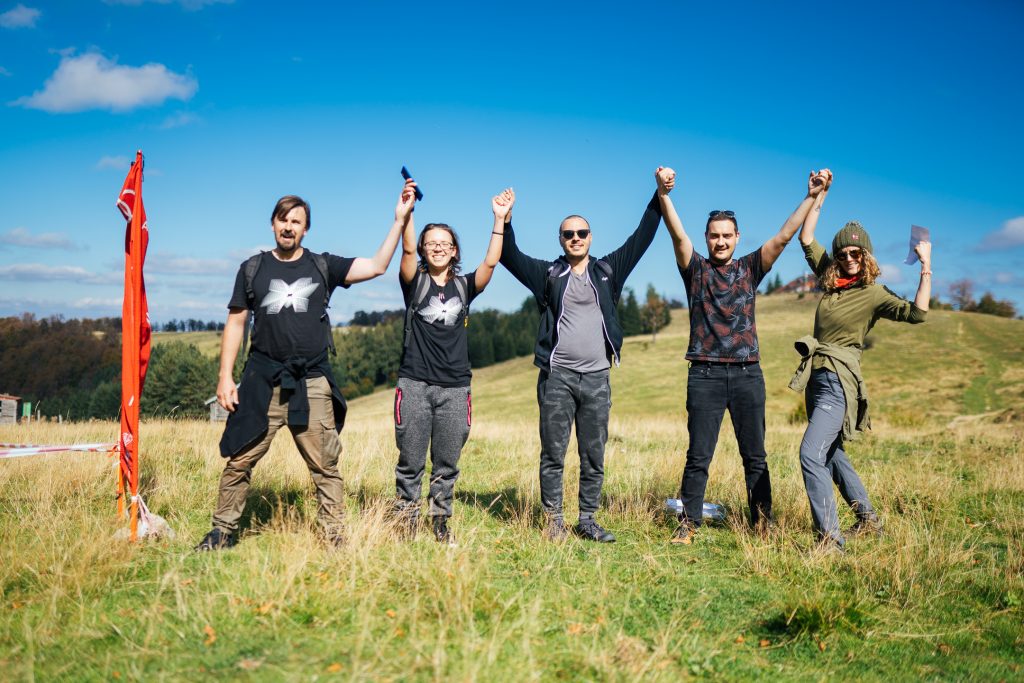The remote working model has become the new normal and it’s here to stay. But do your teams share knowledge as effectively in the digital environment as they would in person?
Knowledge is an essential organizational resource, which has a direct effect on a company’s competitiveness and innovation capabilities. Effective use of knowledge enables the contribution of ideas, which can improve the decision-making process and decrease errors and development time.
However, while we often exchange insights and ideas during a casual conversation or while taking a coffee break in the office, this process is much more challenging in a virtual environment. Lack of personal interaction, proper digital infrastructure, and well-defined processes are some challenges affecting knowledge sharing in virtual teams. With the increasing popularity of the remote working model, it is time for organizations to consider what techniques and mechanisms are necessary to stimulate knowledge exchange in this new era.
Based on recent studies, here are the top 7 tips that can help you do this:
1. Provide a knowledge-sharing framework
The first step is to provide the necessary infrastructure by introducing clear processes and mechanisms that encourage effective communication and exchange of ideas. Think of what tools and activities may support this. For example, mentoring programs, training and webinars are great practices for transferring skills and expert knowledge in remote teams.

To be successful, the knowledge-sharing framework should include regular meetings and opportunities for frequent formal and casual interaction. This, however, doesn’t mean overwhelming your team with too many meetings. Therefore, Agile methodologies such as Scrum could provide a good basis for establishing a knowledge-sharing culture, as they allow frequent yet structured communication and emphasize collaboration and constant exchange of insights. Agile methods minimize unnecessary meetings and improve the decision-making process.
2. Supply the necessary tools
Once you have a framework in mind, you need to support it with proper tools that allow both synchronous and asynchronous communication. This could be achieved with the help of instant messaging tools like Discord, Slack, and Microsoft Teams, where team members can call or text each other in real-time. Additionally, e-mails might be useful for communicating general messages and updates to the whole team.
Keeping the organizational knowledge centralized and accessible to everybody is also very important, especially in the long run. Centralized systems like databases and wikis are helpful for sharing and storing that information for future reference. Moreover, project management tools, like Notion and ClickUp improve team collaboration by enabling people to store documentation and notes, assign tasks, and monitor project progress. Providing a diverse mix of communication platforms would enable team members to choose the most appropriate channel/tool for sharing certain information.
3. Establish relationships and trust
To make the exchange of knowledge more spontaneous, team members need to establish trust and build relationships. Good relationships within teams encourage people to ask for advice or opinions. It also increases their willingness to share information. To build such relationships, however, there is a need for effective interpersonal communication where people discuss different topics and questions. This might be challenging in a 30-40 min online meeting. Therefore, virtual team activities that allow casual communication, like thematic virtual events, interactive games, and workshops are recommended for team bonding.
Recent studies also indicate that getting the team together in person, at least at the outset or periodically during the project, can spark conversations on shared interests and foster stronger relationships as well as faster trust development. Even though for some global teams this might require a lot of resources and planning, such investment can improve the overall performance of the team and the core capabilities of the members.

For example, last summer Motion Software invited all team members to co-work for a week in a remote village, while playing games and enjoying nature together. The team loved it.
4. Lead by example
Behind every great team, there is a great leader. To create a knowledge-sharing culture, virtual leaders have to act as trendsetters and be the first to share their knowledge with the team. By being equally involved in the process, leaders demonstrate an environment of collaboration and encourage people to follow their example.
This actually applies to all team members. People are often discouraged from presenting their ideas and opinions. Especially, if they see no interest or participation from the other side. To deal with this, management should ensure that all team members are equally involved in the process. Sometimes this could mean pushing somebody to make a presentation in front of the team or pairing off people to work together for a few days. Whatever it is, make sure to get as many people excited as possible. This way, they will feel like being part of the community when they share their ideas and not like outsiders.
5. Be supportive and show appreciation
Leaders can also motivate the exchange of knowledge by providing recognition and appreciation for those who are willing to contribute. This could be done through verbal praise, rewards, or even a monetary bonus. However, researchers are still arguing about which has the best effect on not only quantity but also the quality of the shared information.
Yes, money can motivate certain team members to be more proactive, but it also can lead to unnecessary blasts of irrelevant information. So, dear remote leaders, proceed carefully. You don’t want people to overwhelm their teammates with information just to receive a bonus. Take time to observe your team and see what would be the best way to show your appreciation.
6. Present information in different formats
We should keep in mind that every person is different. While some people can absorb information better if they read it, others prefer images and tables or watching videos. Keep in mind that the preferred methods often depend on the type of information that needs to be transferred.
Knowledge can be divided into two categories: explicit and tacit.
- Explicit knowledge is objective and can be easily documented and expressed in the form of documents, audio-visual material, guidelines, and manuals
- Tacit knowledge is usually acquired through practical experience and observations, and therefore, it is considered personal, subjective, and difficult to be articulated
We have recently asked some members of the Motion Software team about their preferred method of acquiring new knowledge. What we found out was that, while the majority of people pointed out online meetings and webinars as the best methods to acquire tacit knowledge, there was no clear consensus in terms of explicit knowledge sharing. Some said that they would choose a written format, some mentioned video content, and others favored visualizations. So, it could be concluded that presenting new information and insights in diverse formats may involve more people in the knowledge-sharing and capturing processes.
7. Consider the different types of knowledge transfer
The knowledge creation model, also known as the SECI model can help you to diversify your knowledge-sharing framework and achieve better results. According to the SECI model, there are 4 dimensions to knowledge creation:
- From Tacit knowledge to Tacit knowledge or Socialization – the process of sharing and creating tacit knowledge through activities that involve experience and practice. This could be supported by: mentoring, informal meetings, observations, one-to-one training, webinars, and workshops
- From Tacit knowledge to Explicit knowledge or Externalisation – the process of articulating tacit knowledge into explicit knowledge by simplifying it and making it more accessible for the other members of the group. The knowledge can be presented as images, concepts, documents, and files containing procedures
- From Explicit knowledge to Explicit knowledge or Combination – occurs when knowledge acquired from outside and inside the organization is combined and processed to create new systemic knowledge, such as reports and databases accessible to the whole team
- From Explicit knowledge to Tacit knowledge or Internalization– refers to the conversion of explicit knowledge into tacit knowledge through repetitive social interaction, training programs, practical exercises, code reviews (software development)
Do you want your remote team to collaborate and exchange ideas and know-how? Then, consider all 4 dimensions and the relevant practices related to them. Combine these with clear goals, appropriate tools and motivational leadership, and voilà, you have the recipe for a successful knowledge-sharing culture in a virtual environment.
Author: Zhanet Klyasheva
Sources:
Collaboration Tools for Virtual Teams in Terms of the SECI Model
Acquiring and sharing tacit knowledge in software development teams: An empirical study – ScienceDirect
SECI, Ba and Leadership: a Unified Model of Dynamic Knowledge Creation
Overcoming Barriers to Knowledge Sharing in Virtual Teams
Managing Knowledge in Global Software Development Factors negatively influencing knowledge sharing in software development | Khoza | South African Journal of Information Management (sajim.co.za)Efforts: Issues and Practices
Trust and Knowledge Sharing: A Critical Combination
Factors negatively influencing knowledge sharing in software development
The Influence of Instant Messaging Usage Behavior on Organizational Communication Satisfaction